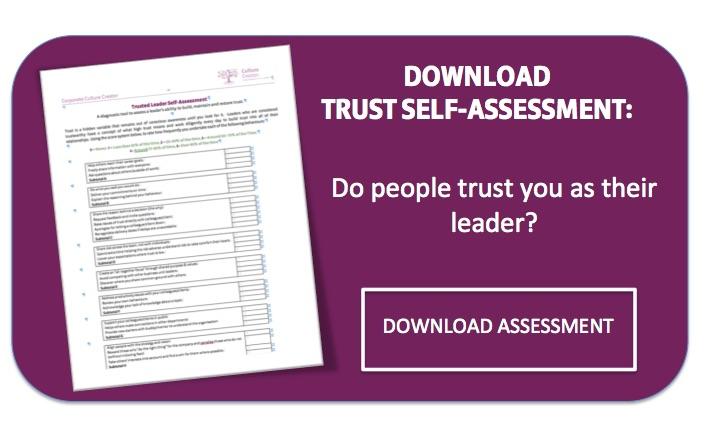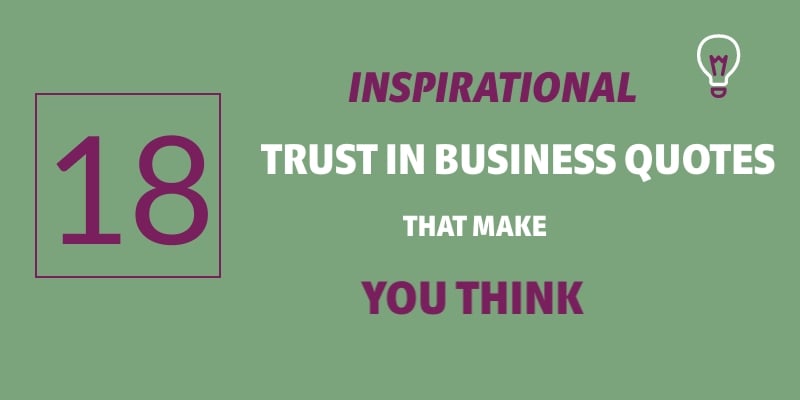Have you ever started a new job or worked with a new team and realised that you needed to build trust fast?
Building trust and managing it long term, is one of the number one skills of a high performing leader. Leaders often talk about the need to build trust but few have a clear strategy that they follow on a regular basis. To get it right requires a variety of skills from:
These are all important. But not enough on their own. What I have discovered is that leaders struggle to build trust if they are poor at communicating the vision, accountability requirements, expectations and their own point of view. Essentially, leaders must have the right foundational communication skills in place first.
Trust is enabled through communication. Every communication we make is an action, a cause set in motion. All communication has some kind of effect on ourselves and others. What we say or don’t say can either build trust or deplete it. Poor communication from senior leaders is a major cause of low trust cultures. Here are nine communication skills every leader needs to master to powerfully build trust with others:
1. Know Thyself and Be Congruent
“Trust is the conviction that the leader means what he says…a leader’s actions and a leader’s professed beliefs must be congruent, or at least compatible .” Peter Drucker
One of the most powerful human drivers is to live in alignment with who we believe are and whom we want to be. When our words and actions don’t match, it creates an integrity gap. The bigger the gap the more likely you will be to act in ways that go against what you’re trying to achieve. Employees will subconsciously distrust your intentions. People need to be able to read you and see consistency in your behaviours, to feel comfortable around you.
Be clear on who you are. What do you stand for? What are you against? What frustrates you? Knowing this makes your intentions and expectations clear. This builds authenticity because people see that your energy matches your intention.
2. Set Clear Expectations of Who you Are and What you Need
People feel more comfortable with a leader when they know what they are doing and why. Once you know yourself better you can tell others:
- how you like to be communicated with, and
- what you plan to do so that anyone can understand it.
It’s also important you find out the same information from each direct report. Also, tell them what you expect from them and how you will measure their performance. Making sure there are no surprises between what you want and expect goes a long way towards increasing trust.
3. Engage for Impact
People love it when a leader has a big, exciting vision for the organisation that pushes everyone forward. It gives them the confidence that the business will survive long-term because leaders know what to do. Leaders need to regularly communicate:
- where the business stands,
- what’s coming up next, and
- how they plan to get everyone there.
Leaders who are good at uniting everyone together know the best way to communicate with each individual at an emotional level to encourage buy-in. They reframe the risks so the risk averse can feel safe, they align the interests of those in other departments and focus on values to encourage alignment of thinking .
4. Be Explicit
“The single biggest problem in communication is the illusion that it has taken place.” George Bernard Shaw
Workplace communication is about reducing ambiguity and uncertainty. The quickest way to get people into fear (and not trust you) is to provide vague information. When people have to guess what is expected of them or where the company is going they get stuck and uncooperative.
Communication often gets misunderstood because of too many assumptions. Such as what people know, what they’re able to do and the presumption of a non-existent discussion.
Express what you want and mean with specific actions. For example: Please email me a report on our top 5 competitors by their value proposition and keywords by Friday 5 pm September 30. Avoid implicit communication that expects people to be spookily accurate mind readers. eg: Please email me a report on our competitors.
5. Be an Active Listener (and keep quiet)
Really listening to employees shows that you are present and focused. This demonstrates that you care more than any words can alone. It gets you out of your head, so you’re more able to help people and understand what is going on. It encourages you to live in reality. Great leaders know that really important information surfaces when they keep quiet. It is when transformation occurs.
Asking someone a question and then waiting to hear a reply seems pretty obvious. Yet, some leaders don’t wait for a response. They jump in with another question, statement or answer. Listen to people and probe for further information. Repeat back the main content of what people say to show that you heard them.
6. Reflect Feedback, Not Failure
Workplace communication is really about feedback, not failure. It’s about being curious and unattached to the outcome.
Master communicators are open to hearing feedback both good and bad. They listen when it is about themselves or work. They avoid jumping to conclusions about what the person is saying and they don’t judge or blame. They create a safe space where people share information and express their opinion.
Furthermore, they educate direct reports to focus on solutions, not problems. This empowers people to provide information in a more positive and informative manner. The result is joint-problem solving where you co-create an improved situation (and increase accountability).
7. Use sincere inquiry (to understand needs)
“The minute we begin to think we have all the answers, we forget the questions.” Madeleine L’Engle
High trust leaders lead by asking questions. They empower those around them to think for themselves and solve problems.
This also ensures that they break through the fog and avoid hasty assumptions. A lot of people talk using vague phrases and generalisations (eg: “None of our customers like the higher price.”) High trust leaders are attuned to fluff and vague corporate speak. They know how to ask questions that gain specificity and improve accountability.
Avoid asking why questions that sound like you are making the other person wrong. Instead, ask outcome based questions (what or how) that focus on results such as:
“What specifically do you mean by that?”
“What would you do if you were in my role?”
8. Build in accountability
To encourage your direct reports to be accountable means you need to be accountable. Acknowledge your mistakes, as well as your successes. Always follow through on what you said you would do. Allow yourself to be vulnerable.
Improving accountability means having clear consequences for poor performers. Hold people accountable when they drop the ball. Demonstrate accountability by putting in processes to:
- evaluate every project (what was good/bad, what can be improved),
- track weekly results/deadlines/accountabilities, and
- articulate clear action steps at the end of each meeting.
9. Connect Individually with Team Members
Of course, you can’t build trust with people if you’re unable to connect with them. Each individual differs in their propensity to trust others. Sophisticated managers understand not everyone is the same. They take the time to understand each team member in terms of their dreams, fears, values, challenges and goals . After establishing common ground, they align the individual’s self-interests to the broader goal of the organisation and team .
This might seem like a lot of work. And it can be. But it is less work, long term. When a leader puts the interests and well-being of their employees above their own, they become a trusted leader. One who is followed in a heartbeat, during bad and good times.
Trust in Communication
Creating a high trust culture boils down to every employee knowing they can rely on every person around them. It means everyone is committed to performing at a high level and helping their peers achieve as well.
Leaders who lead with trust follow through on promises and hold others to account. They communicate honestly and frequently. They help employees see the meaning behind their work and that they matter. They create a safe environment for people to speak up and be themselves. The outcome is a fun, more enjoyable workplace where everyone works together to reach their goals.
How will you communicate today build trust with your colleagues?



